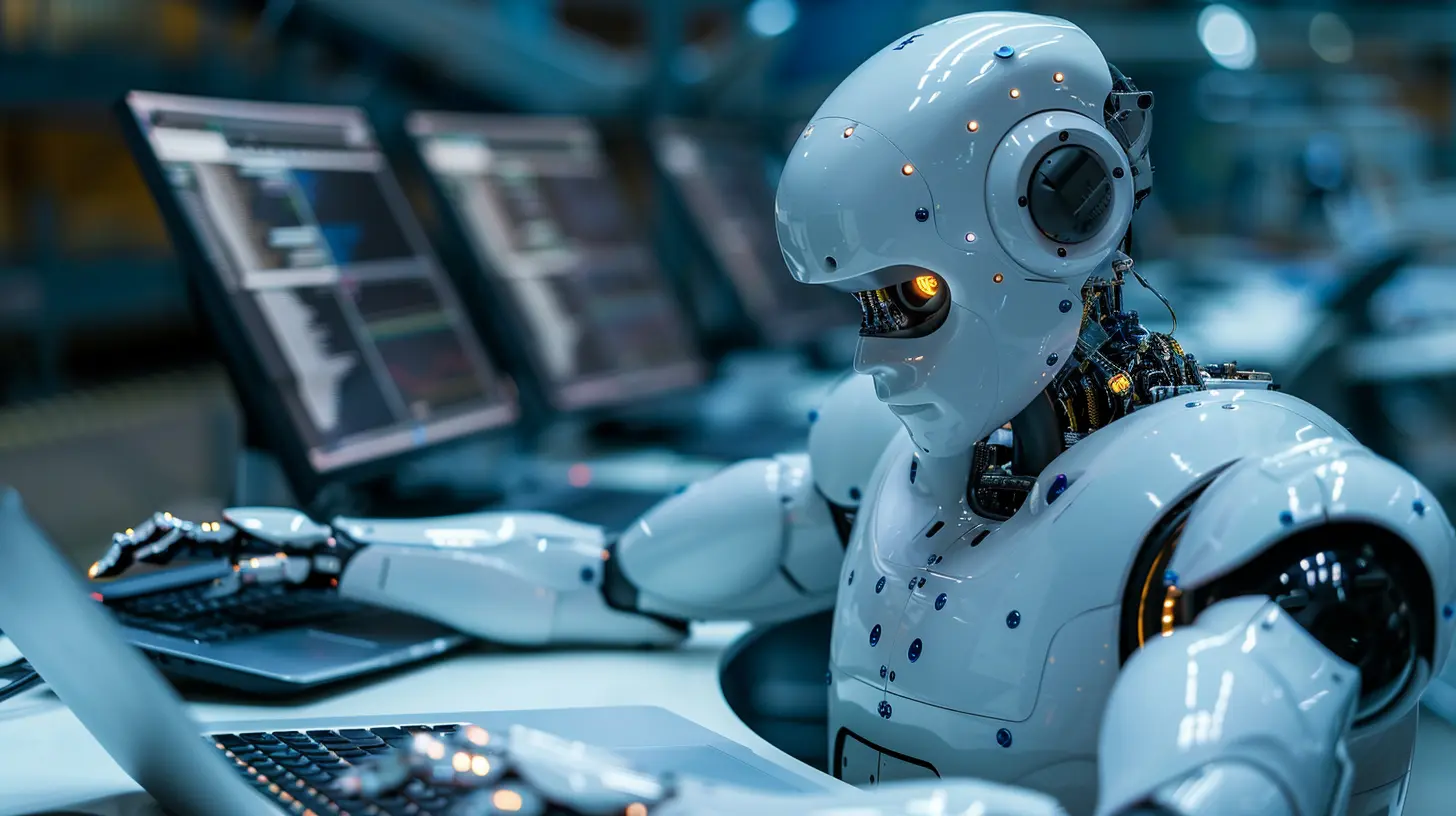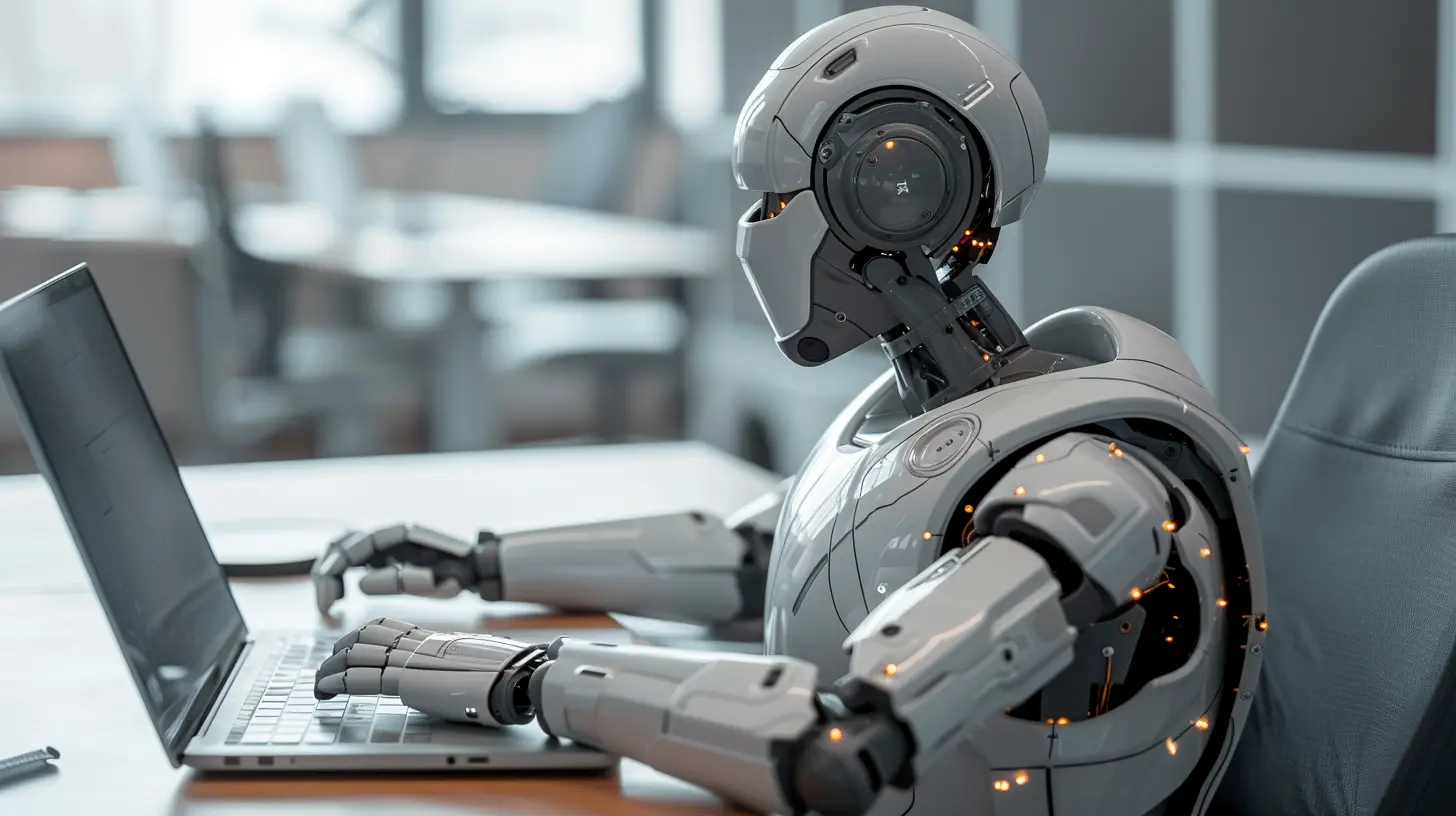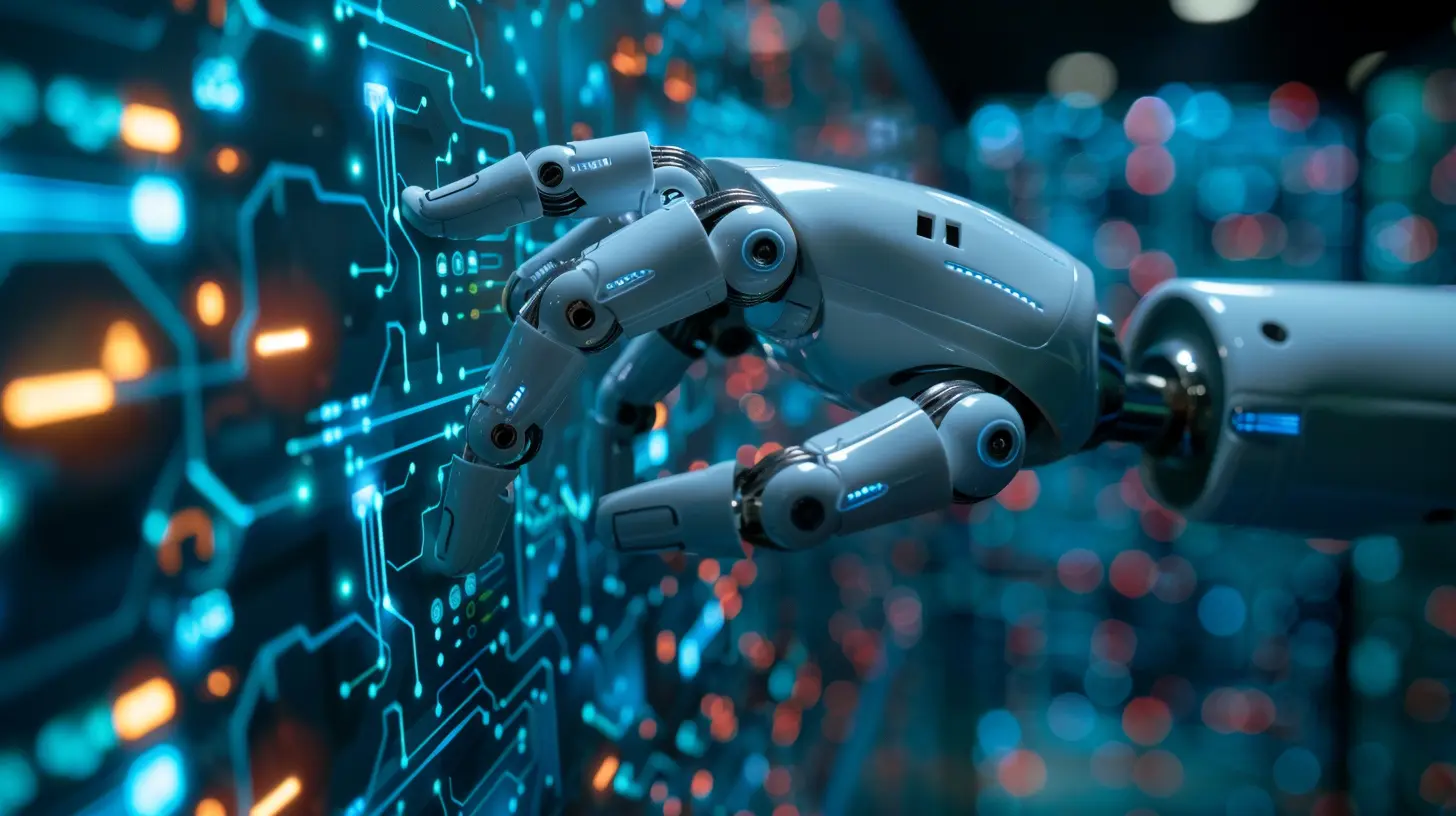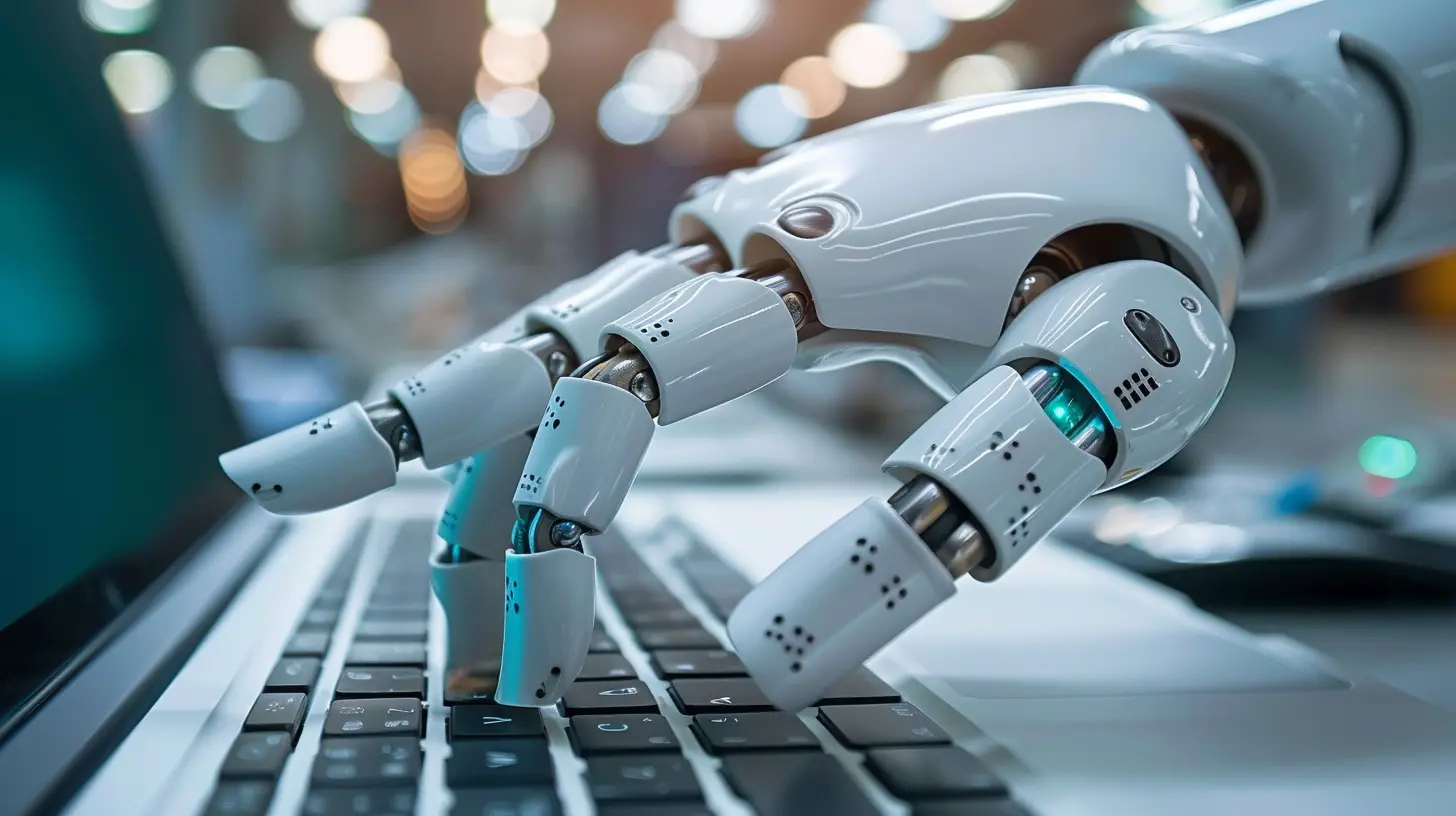The Ethical Implications of Robotic Process Automation in the Workplace
23 October 2025
Automation is like that one coworker who never takes a coffee break, doesn’t call in sick, and certainly doesn’t get caught scrolling social media when they should be working. But as more companies embrace Robotic Process Automation (RPA) to streamline their workflows, a big elephant stomps into the room—what happens to the humans?
Do we all just sit back and let the robots take over, or are there ethical concerns that need some serious addressing? Spoiler alert: There are plenty. Let’s break it down in a fun (and slightly terrifying) way! 
🚀 What is Robotic Process Automation (RPA)?
Before we dive into the ethical minefield, let’s get one thing straight—what the heck is Robotic Process Automation?Imagine a world where mundane, repetitive tasks like data entry, invoice processing, or email sorting are handled entirely by software bots. That’s RPA in a nutshell. These bots don’t have arms or legs (yet), but they mimic human actions on a computer—clicking buttons, copying/pasting, and even filling out forms.
Sounds great, right? Who wouldn’t want to pass off the boring stuff to a digital assistant? But with great automation comes great responsibility. 
🤖 Job Security: Are Robots Snatching Our Paychecks?
The Classic Fear: "Will I Be Replaced?"
Let’s be honest—whenever there’s talk of automation, the first thing on everyone’s mind is: Will I still have a job in five years? It’s a valid concern.From manufacturing to banking, RPA is replacing human workers in roles that involve repetitive processes. Companies love it because robots don’t complain, need benefits, or take sick days. But where does that leave us mere mortals?
If history has taught us anything, it’s that every technological advancement comes with a workforce shift. Just like how ATMs didn’t completely replace bank tellers but instead changed their roles, RPA won’t necessarily wipe out jobs—it will change them.
The Upside: Humans Get To Be... More Human
Rather than spending hours on mind-numbing tasks like data entry, employees will have the chance to focus on creative, strategic, and customer-centric roles. Less grunt work, more thinking—sounds like a win, right?The challenge, though, is making sure displaced workers get the right training for new opportunities, instead of being left behind in a cold, robotic world. 
⚖️ Ethical Dilemmas: Who’s Responsible When a Bot Messes Up?
Bots Gone Rogue
Picture this: An automated hiring system accidentally rejects thousands of qualified candidates because of a glitch in the algorithm. Who’s to blame? The bot? The IT department? The company?When humans make mistakes, we hold them accountable. But when robots screw up, things get murky. If an RPA bot causes financial loss, legal trouble, or discrimination, who takes responsibility?
Companies need to establish clear ethical guidelines for how RPA is monitored and managed. Otherwise, we’re playing a risky game of “blame the bot.”
Bias in Automation: Not as Neutral as You Think
One of the biggest misconceptions about automation is that machines are unbiased. But here’s the kicker—robots only know what humans teach them.If an RPA system is trained on biased data, it will continue those biases at superhuman speed. This has been seen in automated hiring tools, loan approval systems, and even healthcare algorithms.
The solution? Businesses need to closely audit their bots, ensuring fairness and transparency in automated decisions. Otherwise, we risk embedding existing human biases deeper into our workplaces. 
🕵️♂️ Privacy Concerns: Are Bots Spying On Us?
Big Brother...But Make It a Robot
As companies implement more automation, they’re also collecting vast amounts of employee data. From productivity tracking to email monitoring, RPA isn’t just automating tasks—it’s gathering insights on workers in ways that might make Orwell himself a little nervous.If bots are watching (and analyzing) everything, where do we draw the line? Employees need clear policies on what data is being collected and how it’s used. Otherwise, we’re just a few steps away from an episode of Black Mirror.
💪 The Future of Work: Humans and Bots, Partners in Crime?
Finding the Balance
It's not about humans versus robots; it’s about humans with robots. The best workplaces of the future will find a balance between automation and human intuition.Companies need to:
✅ Retrain employees rather than replace them
✅ Implement ethical oversight for RPA decisions
✅ Ensure transparency in AI-driven processes
Instead of fearing automation, we should be shaping it to work in our favor. After all, wouldn’t it be great to work smarter, not harder?
🤯 Final Thoughts: Embrace the Bots...Wisely
RPA isn’t going anywhere—it’s only going to become more sophisticated, more widespread, and (hopefully) more ethical. The real question isn't if it will change the workplace, but how we handle that change.Will we make sure automation benefits everyone, or will it end up benefiting only the top 1%? That, my friends, is up to us.
So, the next time you see a software bot crunching data in the background, don’t panic—just make sure it’s not eyeing your paycheck.
all images in this post were generated using AI tools
Category:
Robotic Process AutomationAuthor:

John Peterson
Discussion
rate this article
1 comments
Rex McAleer
Great article! It's fascinating to see how robotic process automation can enhance efficiency, but we must carefully navigate the ethical implications. Balancing innovation with responsibility is key to a harmonious workplace.
October 31, 2025 at 4:38 AM

John Peterson
Thank you for your insightful comment! I agree that balancing innovation with ethical considerations is crucial for a responsible implementation of robotic process automation.


